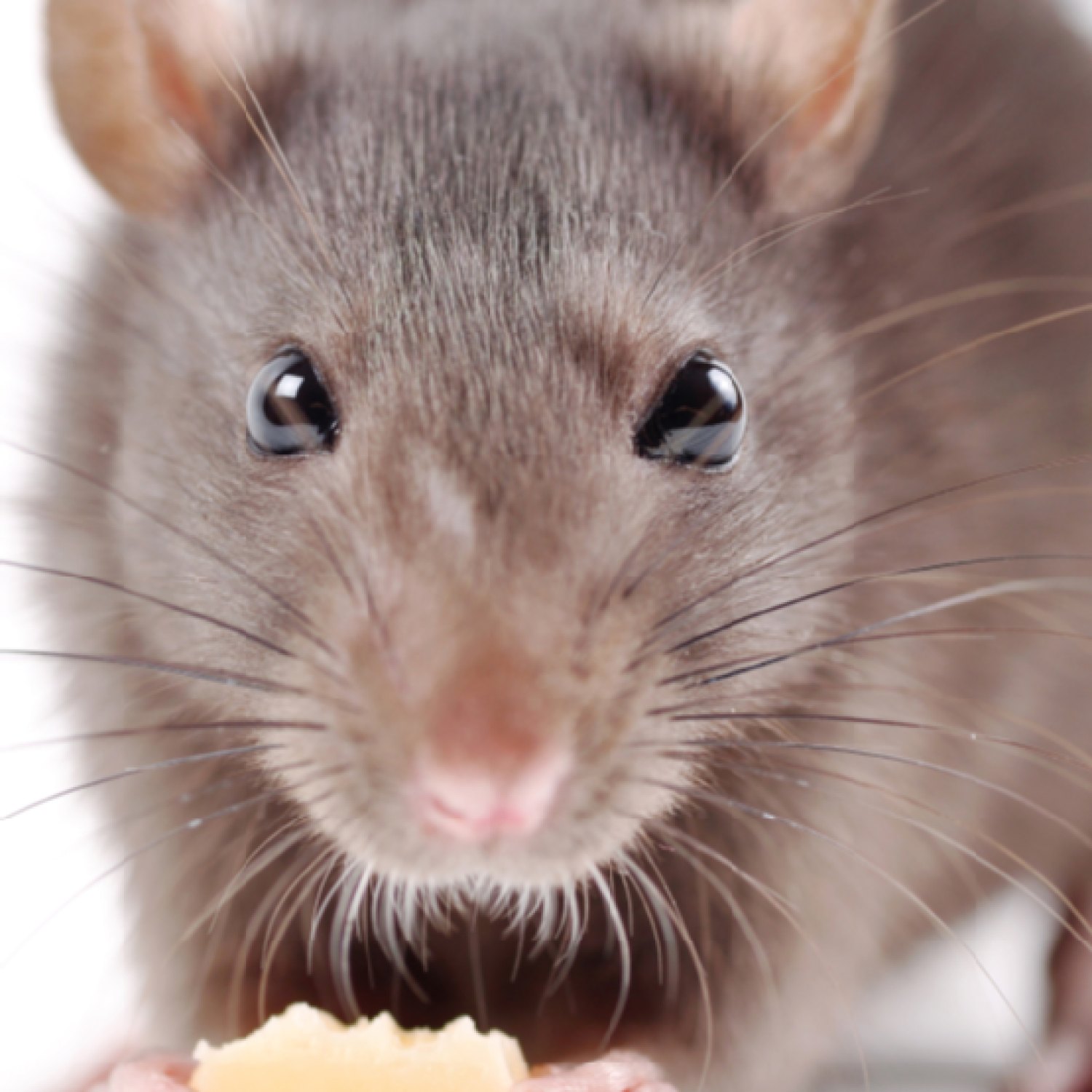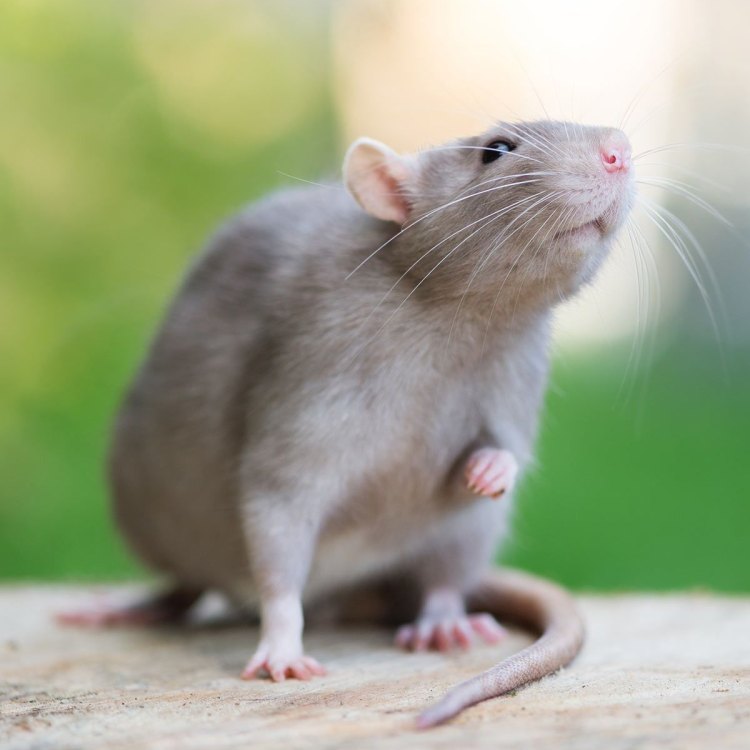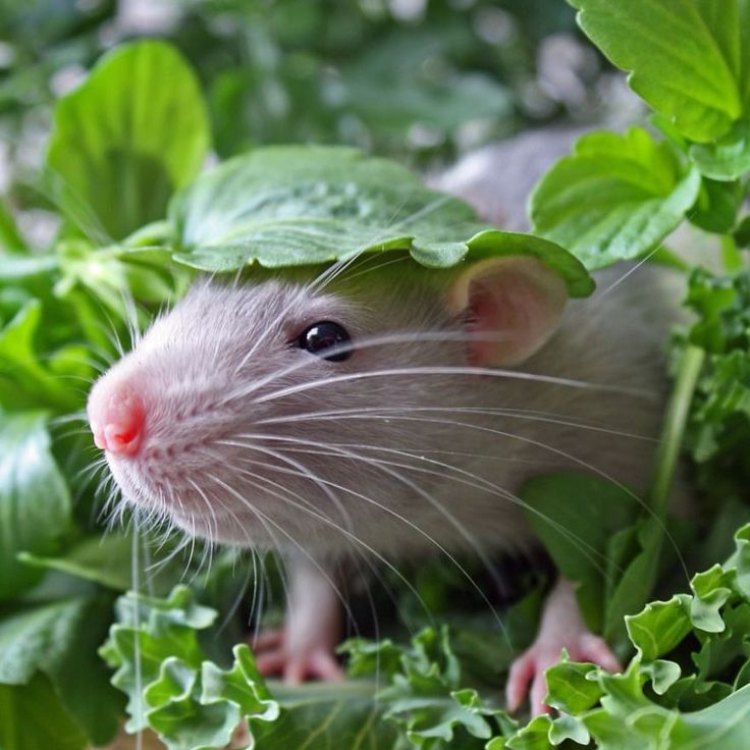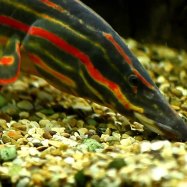
Rat
20-30 cm
The rat, from the Muridae family, is a small and streamlined animal measuring 20-30 cm in length. Found on all continents except Antarctica, these creatures are known for their intelligence and adaptability. They play an important role in the ecosystem as both predators and prey. Keep an eye out for these fascinating animals in your local area! #ratanimals #muridaefamily
Animal Details Summary:
Common Name: Rat
Kingdom: Animalia
Habitat: Urban areas, forests, fields, and agricultural land
The Notorious Rat: A Highly Intelligent and Adaptable Rodent
Rats are one of the most widespread and well-known rodents on the planet. Found on every continent except Antarctica, these small, intelligent creatures have long been associated with urban areas and human settlements. However, there is much more to these highly adaptable creatures than their reputation as pests.Belonging to the scientific family Muridae, rats fall under the order Rodentia along with other rodents such as mice, squirrels, and beavers Rat. The scientific name for the common rat is Rattus norvegicus, and it is also known by its common name, simply “rat”. Rats belong to the animal kingdom and the phylum Chordata, which encompasses all animals with backbones. They are further categorized as mammals in the class Mammalia, indicating their warm-blooded nature and ability to nurse their young.
Rats are believed to have originated in Asia and were later spread to other parts of the world through human migration. They have a widespread geographical distribution, making them one of the most successful species on Earth. Rats are found in a variety of habitats, including urban areas, forests, fields, and agricultural land. This adaptability and widespread distribution make them a fascinating species to study.
Adaptations and Physical Characteristics
Rats have a small and streamlined body shape, measuring between 20-30 cm in length and weighing anywhere from 150-500 grams. Their small size makes them perfectly suited to navigating through tight spaces and seeking out food sources Rinkhals Snake. They have long, narrow tails that can measure up to 25 cm in length, which helps them with balance and climbing.One of the most noticeable physical characteristics of rats is their variable coloration. While wild rats are generally brown or gray, laboratory-bred rats commonly have white, black, or albino coats. This color variation allows them to blend into their surroundings and helps with their survival in different habitats. Rats also have sharp claws and powerful jaws, making them skilled climbers and foragers.
Rats have excellent senses, including acute hearing, smell, and touch. Their large, protruding front teeth, called incisors, are perfect for gnawing and biting through tough materials such as wood, plastic, and even wires. This ability to gnaw through almost anything has earned them a reputation for causing damage and destruction in human settlements. However, this is a crucial adaptation for their survival as it allows them access to food sources and building materials, especially in urban areas.
Diet and Feeding Behavior
One of the reasons why rats have been so successful in their global distribution is their omnivorous diet. They will eat almost anything, including seeds, grains, fruits, insects, and even small animals. Rats are opportunistic feeders, meaning they will take advantage of whatever food sources are available to them.In urban areas, rats scavenge off human waste and food scraps, while in agricultural areas, they feed on crops. They are also skilled hunters and will catch and eat small animals such as insects, birds, and reptiles. This diverse diet plays a significant role in their ability to adapt to changing environments.
Rats have an interesting feeding behavior called "shingling", where they will often take small bites out of different food sources instead of focusing on one. This allows them to leave behind enough food for a future meal and to minimize the risk of ingesting a contaminated food source. Rats also have a keen sense of smell and can detect food from long distances, further aiding their survival.
Intelligence and Social Behavior
One of the most intriguing aspects of rats is their high level of intelligence and complex social behavior. These creatures have an exceptional memory and can remember the location of food sources and routes to their nests. This superior memory also makes them skilled at finding their way through mazes, making them popular subjects for laboratory experiments.Rats are also highly social creatures, living in large groups or colonies. Within these colonies, they have a complex hierarchy, with dominant males and females leading the group. Rats communicate with each other through vocalizations, facial expressions, and body language. They have even been observed showing empathy and compassion towards group members in distress.
Rats and Disease
Despite their negative reputation as pests, rats play a critical role in maintaining a healthy ecosystem. They are scavengers and help clean up the environment by consuming waste and dead animals. However, rats are also known carriers of several diseases and can transmit these to humans through contact with their urine, droppings, or bites.Some of the diseases transmitted by rats include the bubonic plague, hantavirus, and leptospirosis. These diseases can be fatal, making it essential to take precautions when dealing with rats or rat-infested areas. It is crucial to keep living spaces clean and free of any potential food sources for rats to prevent their presence in human settlements.
The Not-So-Sneaky Rat
Rats have long been thought of as sneaky, stealthy creatures, often appearing out of nowhere and disappearing just as quickly in human settlements. However, recent studies have shown that these creatures may not be as sneaky as we thought. In fact, rats are highly social and vocal creatures, and their presence may be more noticeable than we think.A study conducted by researchers at the University of Salford in the United Kingdom found that rats communicate with each other through ultrasonic vocalizations that humans cannot hear. These vocalizations are used for social communication and can vary depending on the context. This discovery indicates that rats may be more prevalent and vocal in urban areas than previously thought.
The Benefits of Rat Studies
While rats have long been used in laboratory experiments, there has been a significant shift towards using other species such as mice in recent years. However, rats still play a crucial role in scientific research, especially in fields such as psychology and neuroscience. Their high level of intelligence and complex social behavior make them valuable subjects for studying human behavior and cognition.Moreover, rats share many biological similarities with humans, making them ideal for studying diseases and testing potential treatments. They also have a shorter lifespan than larger animals such as dogs and monkeys, making them more cost-effective and practical for long-term studies.
Conclusion
Rats have been a part of human history for millennia and have earned a reputation as pests and nuisances. However, beyond their negative perception, these creatures are highly intelligent, adaptable, and social. Their success and widespread distribution are a testament to their ability to survive and thrive in different environments.The rat’s notorious status has made them a fascinating subject of study, and they have played a crucial role in many scientific advancements. Whether we love them or hate them, there is no denying that rats are a remarkable and integral part of our ecosystem. So, the next time you spot a rat, instead of reaching for the pest control, take a moment to appreciate these highly intelligent and adaptable creatures.

Rat
Animal Details Rat - Scientific Name: Rattus norvegicus
- Category: Animals R
- Scientific Name: Rattus norvegicus
- Common Name: Rat
- Kingdom: Animalia
- Phylum: Chordata
- Class: Mammalia
- Order: Rodentia
- Family: Muridae
- Habitat: Urban areas, forests, fields, and agricultural land
- Feeding Method: Omnivorous
- Geographical Distribution: Worldwide
- Country of Origin: Asia
- Location: Found on all continents except Antarctica
- Animal Coloration: Variable, commonly brown or gray
- Body Shape: Small and streamlined
- Length: 20-30 cm

Rat
- Adult Size: Medium-sized
- Average Lifespan: 2-3 years
- Reproduction: Viviparous
- Reproductive Behavior: Polygamous
- Sound or Call: Various vocalizations
- Migration Pattern: Non-migratory
- Social Groups: Colonial
- Behavior: Nocturnal and highly adaptable
- Threats: Predation, habitat loss, and poisoning
- Conservation Status: Least Concern
- Impact on Ecosystem: Can cause damage to crops and infrastructure
- Human Use: Used in scientific research, as pets, and for pest control
- Distinctive Features: Long tail, large ears, and sharp teeth
- Interesting Facts: Rats are highly intelligent and can learn complex tasks
- Predator: Humans, birds of prey, snakes

Rattus norvegicus
The Versatile and Intelligent Rat: A Closer Look at this Misunderstood Rodent
When we think of rats, we often associate them with negative connotations – dirty, disease-carrying pests that scurry around in the dark. However, these small creatures are much more than their negative reputation. In fact, rats are highly adaptable, intelligent, and fascinating animals with unique features and behaviors. In this article, we will take a deep dive into the world of rats and explore their life, behavior, threats, and impact on the ecosystem PeaceOfAnimals.Com.Rats are medium-sized rodents that belong to the Muridae family, along with mice and other rodents. There are over 60 species of rats, with the most common being the brown rat (Rattus Norvegicus) and the black rat (Rattus Rattus). They can be found all around the world, except for Antarctica, and have been living alongside humans for thousands of years.
The Life of a Rat
An average rat's lifespan ranges from 2 to 3 years in the wild. However, in captivity, they can live up to 4 or 5 years. These rodents reach their adult size at around 6 months old and can weigh between 200-400 grams, depending on their species.Rats are viviparous, meaning that they give birth to live young. They have a gestation period of 21-23 days, and a litter can consist of up to 14 pups. These pups are born hairless and blind and are entirely dependent on their mother for the first few weeks of their lives Redstart. They will start to open their eyes at around 10 days old and will become fully independent at about 5-6 weeks old.
Polygamous Reproductive Behavior
Rats are known to exhibit polygamous reproductive behavior, meaning that they mate with multiple partners. This behavior is due to their colonial social structure, where they form large colonies with multiple males and females. This behavior helps to ensure genetic diversity within the colony and increase the chances of survival for their offspring.A Symphony of Vocalizations
While many may assume that rats are silent creatures, they are, in fact, quite vocal. These rodents have a wide range of vocalizations, from chirps and squeaks to chattering and hissing. They use these sounds to communicate with each other and convey different messages such as danger, food availability, and territory boundaries.Nocturnal and Highly Adaptable Behavior
Rats are primarily nocturnal creatures, meaning that they are most active during the night. This behavior helps them avoid predators and allows them to scavenge for food without being disturbed. However, they can also be seen during the day, especially in areas with high human activity.These rodents are highly adaptable and can thrive in various environments, from urban cities to rural areas. They can make their homes in burrows, sewers, abandoned buildings, and even in our own homes. Their ability to adapt and survive in different habitats has contributed to their success as a species.
The Threats Facing Rats
Rats face several threats in their natural habitats, the most significant being predation, habitat loss, and poisoning. As prey animals, they are vulnerable to predators such as humans, birds of prey, and snakes. They also face habitat loss due to human activities such as urbanization and deforestation.Unfortunately, rats are also perceived as pests and are often killed through poisoning. This method can also harm other animals and disrupt the delicate balance of the ecosystem. Hence, it is crucial to find more effective and sustainable ways to manage rat populations.
The Least Concerned Species
Despite these threats, rats are classified as a species of Least Concern on the IUCN Red List. This classification means that their population is stable and not facing any significant threats. In fact, their adaptability and resilience have helped them thrive and maintain a healthy population.The Impact of Rats on the Ecosystem
While they may be seen as pests, rats play a vital role in the ecosystem. As omnivores, they eat a variety of foods, including fruits, grains, insects, and even other small animals. This diet makes them important seed dispersers and helps to maintain a healthy balance in their habitats.However, the high numbers of rats in urban areas can also cause damage to crops and buildings. They are known to chew through wires and insulation, causing fires and costly repairs. This is why proper management and control of rat populations are essential.
Human Uses of Rats
Rats have been used by humans in various ways for thousands of years. In ancient times, they were used for food, medicine, and even as sacrifices in some cultures. Today, they are utilized in scientific research due to their intelligence and ability to learn complex tasks quickly. They are also kept as pets by some people, with their docile nature and sociable behavior making them popular companions.Rats are also used in pest control, particularly in agricultural settings. Due to their highly adaptive nature, they can quickly become resistant to traditional poisons, making them challenging to control. However, alternative methods such as introducing natural predators like owls and cats have proven to be more effective and sustainable.
Distinctive Features and Interesting Facts
Rats have several distinctive features that set them apart from other rodents. They have long tails that help them with balance and movement, large ears that serve as a vital tool for their excellent hearing, and sharp teeth that they use for gnawing and defending themselves.Moreover, rats are highly intelligent and can learn complex tasks through positive reinforcement. This ability has been studied by scientists, and it is believed that rats may possess a level of intelligence comparable to dogs and cats.
The Predators of Rats
As mentioned earlier, rats are prey animals and face threats from humans and other predators. Humans are their biggest predator, as we perceive them as pests and actively hunt and poison them. Birds of prey, such as owls and hawks, are also natural predators of rats. Snakes, both non-venomous and venomous, also prey on rats, making them a vital part of the rodent's natural ecosystem.The Underestimated Beauty of Rats
In conclusion, rats may be small and often misunderstood creatures, but they play important roles in the ecosystem. They are highly adaptable, intelligent, and social animals, and their presence has been ingrained in our society for thousands of years. By understanding and appreciating these fascinating rodents, we can coexist with them peacefully and continue to admire their unique traits.

The Notorious Rat: A Highly Intelligent and Adaptable Rodent
Disclaimer: The content provided is for informational purposes only. We cannot guarantee the accuracy of the information on this page 100%. All information provided here may change without prior notice.












